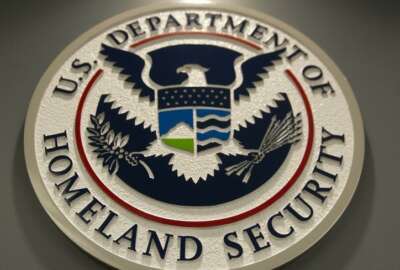Best listening experience is on Chrome, Firefox or Safari. Subscribe to Federal Drive’s daily audio interviews on Apple Podcasts or PodcastOne.
On first glance, the Department of Homeland Security is a model agency when it comes to the diversity of its workforce.
About 47% of the DHS workforce identifies with a diverse racial or ethnic group, the department said, compared to a 37% diversity rate for the rest of the federal workforce.
But DHS has struggled to retain these employees for leadership roles. Employees cite issues with their supervisors and managers, a lack of promotion opportunities and personal and family challenges — many of which are tied to the tough nature of several DHS field jobs — as reasons for their decision to leave the department.
“DHS’ workforce as a whole is reasonably diverse, thanks in large part to the diversity in the workforces in Customs and Border Protection and the Transportation Security Administration,” Xochitl Torres Small (D-N.M.), chairman of the House Homeland Security Subcommittee on Oversight, Management and Accountability, said last week at a hearing on DHS diversity. “But I do disagree slightly with the comments about the diversity of the leadership at the senior leadership level.”
About 55% of the TSA workforce, for example, identifies with a diverse racial or ethnic group, she said, but 21% are in leadership positions.
At DHS headquarters, 30% of employees are African American, but 8% have leadership roles, Torres Small said.
DHS doesn’t strive to fill “quotas,” but it is focused on strategies to improve diversity within all leadership ranks, Angela Bailey, the department’s chief human capital officer, said.
“Once we have folks on board, it becomes a color blind kind of situation for us,” she said. “What we’re really looking for instead is ensuring that they feel included, that they feel like they’re cared for [and]that they understand we have a compassionate need for what they’re doing. Then therefore that helps them, we believe… provide caring and compassionate service to the American public.”
DHS has deployed a few strategies to raise awareness about its leadership programs, including the Senior Executive Service.
The department is especially focused on building a stronger pipeline of GS-12s, 13s and 14s who may be interested in entering the SES one day. DHS meets quarterly with its components to discuss that leadership pipeline, Bailey said, and it holds focus groups with employees to listen to their concerns about the barriers that are holding them back.
There are signs those strategies are paying off, Bailey said.
Women make up about 36% of the DHS “leadership pipeline,” compared to the 30% of women executives in the SES today.
And though 22% of the current DHS SES cadre identify as having a diverse background today, the “pipeline” of rising GS-12s, 13s and 14s has a 34% diversity rate.
The House subcommittee praised those efforts but recommended DHS formalize the findings from its focus groups and other conversations into some kind of formal report.
“Our goal is to build a cadre of leaders at a level that is lower than just at the SES level so we can create these career advancement opportunities,” Bailey said. [We’re also] focusing in on the leadership development for our current leaders, and not just about the nuts and bolts of how to be supervisor, but actually how to care for the employees and how to address what their concerns are.”
Many of DHS’ challenges in retaining a diverse workforce stem from the unique nature of some jobs within the department.
These aren’t intentional barriers, Yvonne Jones, director of strategic issues for the Government Accountability Office, said. But they certainly make it more difficult for DHS to retain a diverse workforce.
Work schedules for immigration and law enforcement jobs can be grueling, she said. CBP and ICE often have openings in tough geographic locations along the southern and northern U.S. borders, the department added.
Bailey said DHS has deployed rotational programs and planned, individualized career paths to incentivize employees to take on these difficult jobs in remote locations.
Mentorship programs are helping too, she said. DHS launched a mentorship program for women in law enforcement last year. The program has 36 pairs of mentors and mentees so far.
Though retaining a diverse workforce is an especially tough challenge, it appears DHS has an easier time with recruitment. The department visited 46 historically black colleges and universities and 223 minority serving institutions in 2019. DHS has also hosted several career fairs targeted at veterans, individuals with disabilities and other groups.
Still, Bailey said it’s more difficult than it should be to recruit talent directly from federal internship programs to full time positions. Several DHS components have launched successful internship programs in recent years, she said.
High school students learn welding, electrician and other trade craft skills through an internship program at the Coast Guard Yard in Curtis Bay, Maryland, Bailey said. But once those students leave the internship program and try to apply to a full time position on USAJobs.gov, their resumes get lost among hundreds of other applications, she said.
The department is helping their interns craft federal resumes to combat that problem, Bailey said.
“While it irritates me that we cannot have a simplified way of getting students on board into DHS, we’re not going to let it be an excuse for why we’re not going to do everything in our power to get these kids into really exceptional careers,” she said.
Copyright
© 2024 Federal News Network. All rights reserved. This website is not intended for users located within the European Economic Area.
